Following the immediate success of group charity singles “Do They Know It’s Christmas?” (1984) and “We Are The World” (1985) – both massive, worldwide #1 hits – Ethiopian famine relief crusader Bob Geldof and Midge Ure conceived a concert event that “should be as big as is humanly possible.” And that’s just what happened on July 13, 1985: A show simultaneously staged at London’s Wembley Stadium (before an estimate 70,000 people) and JFK Stadium in Philadelphia, PA (which drew a reported 100,000) and broadcast around the world to some 1.9 billion viewers.
The mammoth undertaking received renewed attention thanks to the tremendous success of the 2018 Queen biopic, Bohemian Rhapsody. The group’s comeback performance at Live Aid was voted the world’s greatest rock gig in a 2005 poll.
Superstars that performed among the 50-plus acts were Paul McCartney, Elton John, David Bowie, Mick Jagger, Keith Richards, Madonna, Bob Dylan, Eric Clapton, and Crosby, Stills & Nash and Young, to name some but hardly all. The Who, Led Zeppelin and Black Sabbath also reunited to appear at the show.
The BBC aired the concert in the U.K., with its feed shared throughout Europe. MTV aired the entire event in the U.S. which significantly boosted the awareness of the still fledgling cable network. ABC TV aired several hours live in primetime.
In September 2018, an official Live Aid channel on YouTube was created, with dozens of performances from the event. What follows is an hour-by-hour recap of how the event was presented at the two venues and to the massive worldwide television audience.
At 12 noon on Saturday, July 13, 1985, in England, the Coldstream Guards took the stage at Wembley, and after they played “God Save The Queen,” Prince Charles and Princess Diana officially inaugurated the event. Status Quo kicked off the music aptly enough with John Fogerty’s “Rockin’ All Over the World.”
It was just 7 a.m. in the Eastern U.S. and 4 a.m. on the west coast. The Style Council played next, followed by Geldof’s own Boomtown Rats, then Adam Ant, Ultravox and Spandau Ballet.
The U.S. performances began just before 9 a.m. local time with two songs by an unknown who went by the name Bernard Watson who had somehow convinced legendary producer Bill Graham to let him open the JFK Stadium show. Thus, 18-year-old David Weinstein got himself the biggest gig of his career by opening with a cover of Bob Dylan’s “All I Really Want to Do.”
The U.S. portion continued with sets by Joan Baez and the Hooters, as well as the Four Tops and Billy Ocean. Meanwhile, the Wembley audience heard from Elvis Costello, Nik Kershaw and Sade.
Black Sabbath featuring Ozzy Osbourne, as they were billed for this performance, were introduced by Chevy Chase, and woke up the Philadelphia crowd at 9:55 a.m. local time with a three-song set.
Of Live Aid’s many famous stunts and collaborations, perhaps the most unique was made by none other than Phil Collins. Genesis was on a brief hiatus to allow its three members to stretch out their various solo careers. Earlier in the year, Collins had released his third solo album, No Jacket Required. It was a worldwide smash putting him at the very top of the music world.
The singer and drummer decided to do the unthinkable: play sets at both venues. At around 3:15 p.m. local time at Wembley (10:15 a.m. on the east coast), Collins performed two of his huge hits, “Against All Odds (Take a Look at Me Now)” and “In the Air Tonight,” plus two songs with Sting, who had just released his first solo album.
And thanks to the miracle of supersonic air travel, Collins flew the Concorde to New York’s JFK Airport where a helicopter then took him to Philly.
The U.S. show continued with sets from Run-D.M.C., Rick Springfield and REO Speedwagon. In London, Howard Jones, Bryan Ferry (with David Gilmour), and Paul Young all performed.
Crosby, Stills and Nash treated the JFK Stadium crowd to several songs. “We’re very proud to be here,” said Nash.
The programmers did their best to embrace all genres of popular music. Immediately following CSN’s acoustic set in Philly were Judas Priest.
After Bryan Adams performed in the U.S., U2 treated the Wembley crowd and the worldwide TV audience to a set, shortly after 5:15 p.m. local time (12:15 p.m. on the east coast). Their appearance boosted their career to new heights.
Meanwhile, back at JFK Stadium, newly minted star Bryan Adams played a set. Just past 12:30 p.m., it was then time for some good vibes from the Beach Boys who offered many of their biggest hits, while dressed in garb ranging from suits (Carl Wilson) to beach garb (Mike Love).
Related: Listings for 100s of classic rock tours
Back in London, at 6 p.m., Sting returned to the stage, this time joining Dire Straits to sing their current collaboration. “I want my…,” sang the 33-year-old in his falsetto intro. “I want my MTV…”
“Money For Nothing” would go on to win Video of the Year in 1986 at the third MTV Video Music Awards. Back in Philadelphia, George Thorogood and the Destroyers were joined by blues legends Bo Diddley and Albert Collins.
At 6:41 p.m. local time in London, the reunited Queen strode onto the Wembley Stadium stage. Many say their performance was the #1 highlight of the entire event.
“This next song is only dedicated to beautiful people here tonight… That means all of you…”
In Philadelphia, Simple Minds’ set included their recent #1 smash, “Don’t You (Forget About Me),” from the hit film The Breakfast Club. Things were just beginning to heat up as David Bowie stepped to the mic in London at 7:23 p.m. (2:23 p.m. on the east coast).
Watch Bowie’s bravura performance of “Heroes”
Pretenders, introduced by Grace Slick, then wowed the JFK Stadium crowd with a five-song set.
Just before 8 p.m. local time, The Who came on in London to play such war horses as “My Generation,” “Pinball Wizard” and “Won’t Get Fooled Again.”
Watch Jack Nicholson (in Philly) introduce The Who
Back in the U.S., Santana were joined by Pat Metheny, followed by Ashford & Simpson with guest Teddy Pendergrass.
It was peak hour at Wembley when Elton John took the stage at 8:50 p.m. local time. The Rocket Man was joined by Kiki Dee on their 1976 hit, “Don’t Go Breaking My Heart.” George Michael and Andrew Ridgeley, riding high on the pop charts as Wham, joined in for “Don’t Let the Sun Go Down on Me.” “This is one of my favorite tracks of Elton’s,” said Michael.
Then it was back to Philly, where it was time for one of the biggest stars on the planet, Madonna. She began her brief set with her first hit. “C’mon people… put your hands together!”
In London, Freddie Mercury and Brian May performed Queen’s 1984 song, “Is This the World We Created…?” and then made way for a still-boyish-looking Paul McCartney, who took the stage at 9:51 p.m. (He had just turned 43.) Three minutes into his solo performance of “Let it Be,” he was joined by Geldof, Bowie, Alison Moyet and Pete Townshend, as the crowd erupted.
The London audience required a star-studded finale and they got it. Most of the day’s performers – and more – came on stage to perform “Do They Know It’s Christmas? just before 10 p.m. local time as the world watched.
“I think you know the next song,” said Geldof. “It might be a bit of a cock-up, but if you’re gonna cock-it-up, you may as well do it with two billion people watching.”
Bowie, Geldof, George Michael, Sting and Bono were among the British stars doing solos. Among the other stars onstage: Elton John, Roger Daltrey and Mercury. Chills.
“Over to you, Philadelphia,” shouted Geldof.
At JFK Stadium, the waiting was the hardest part. Tom Petty and the Heartbreakers were charged with following London’s grand send-off. The band were on a roll with their fourth straight Top 10 album. “How are ya,” asked TP, even then the coolest guy in the room.
With no more tossing it back to London, the JFK stage had the world’s attention. Kenny Loggins sang his recent #1 hit, “Footloose.” He was followed by the Cars who gave the crowd just what they needed.
Related: Listings for 100s of classic rock tours
To kill time for a set change, VJs Nina Blackwood and Alan Hunter were interviewing Daryl Hall and John Oates. Up next was Neil Young, just 39-years-old, with a set that offered several of his earliest solo hits.
The Power Station, with singer Michael Des Barres subbing for Robert Palmer, performed two songs. They were followed by the Thompson Twins – with guests Madonna, Steve Stevens and Nile Rodgers.
It was time for more heavy hitters. Next up? Eric Clapton, who was joined on stage by none other than Phil Collins, who had arrived from Wembley.
Watch the crowd react to the opening notes of Clapton’s performance of “Layla” (with Collins joining on drums)
Collins remained on stage and reprised several numbers that he had played hours earlier at Wembley. “I was in England this afternoon,” said Collins, as the crowd roared its approval.
Immediately afterwards, at 8:10 p.m. on the east coast, it was a rare on stage reunion for Led Zeppelin’s Jimmy Page, Robert Plant and John Paul Jones, who were joined by drummers Tony Thompson and – you guessed it – Collins, filling in for the late John Bonham.
They were followed by another reunion, this time featuring Crosby, Stills, Nash and Young.
In retrospect, at this point in the evening, the choice of the next several artists within the context of the primetime programming lineup raises eyebrows. But there were Duran Duran, opening their set with their current chart topper, the theme song to the James Bond film, A View to a Kill.
They were followed at 9:20 p.m. by a set from… Patti LaBelle.
Next up were Hall & Oates whose performance included a Temptations medley with Eddie Kendricks and David Ruffin.
Mick Jagger was introduced by Bette Midler and breezed through an assortment of songs, including the Stones’ “Miss You.” “Where’s Tina?” the 41-year-old asked, as he was joined on stage by Tina Turner for a cover of his 1984 hit duet with Michael Jackson, “State of Shock,” followed by a mid-song costume change for “It’s Only Rock ‘n’ Roll (But I Like It).”
Shortly after 10:30 p.m. ET, Jack Nicholson returned to the mic. “It’s my deep personal pleasure to present to you one of America’s great voices of freedom…” as he introduced Bob Dylan, who welcomed his bandmates for the evening, Keith Richards and Ron Wood, for their joint performance of “Blowing in the Wind.”
There was one more song to be sung. Just as in London, six hours earlier, the performers in Philadelphia returned to the stage, this time to sing an extended “We Are the World,” which had been recorded earlier that year in the hours following the Grammy Awards.
On this night, solos were handled by Lionel Richie, Harry Belafonte, Sheena Easton, Dionne Warwick, Melissa Manchester, Kenny Loggins and Patti LaBelle (who did her best to dominate the mic).
If you’re a new Best Classic Bands reader, we’d be grateful if you would Like our Facebook page and/or bookmark our Home page.
The mega-concert raised over $150 million and earned Geldof a knighthood. As Time.com noted on the event’s 30th anniversary in 2015, “Live Aid demonstrated that compassion could be commodified in the interest of the greater good. In an era commonly remembered as one of egotistical greed and unfeeling indifference, a third of the world’s population turned to their television sets to watch an exercise in empathy.”
While the programming clocked in at roughly 16 hours, the total length was far longer since performances on the two trans-Atlantic stages occasionally overlapped.
Kudos to this unofficial Live Aid site for much of the historical information.
Live Aid merch is available in the U.S. here.

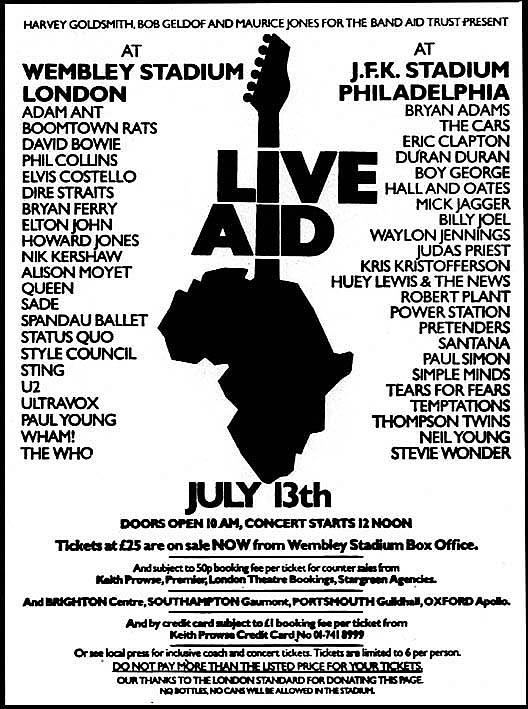
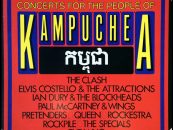
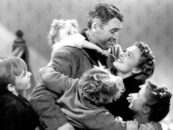
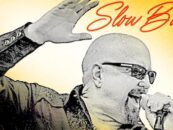
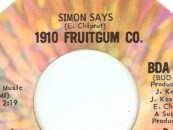

4 Comments so far
Jump into a conversationI own the official 4 disc DVD collection that was released in 2004. It contain over 10 hours of footage.Sadly there’s no Led Zeppelin. If i remember it correctly they felt they performance was not good and didn’t allowed it to be released!
They felt that Phil Collins didn’t know the material well and tried to upstage them.
When music was really music, not computer generated junk. The renaissance of music was defiantly the 60’s / 70’s and the early 80’s. I feel sad for young people today. They will never know how much they missed.
That show was the first time I ever saw Madonna perform live. What a buzzkill she was. It was quickly obvious to me that she was a very marginal talent at best. She simply didn’t have the goods to follow the great stars who had preceded her. Ever since then I’ve considered Madonna to be a great self-promoter but not much of a musical force. And I believe I was right.